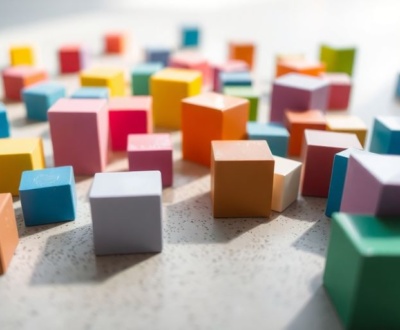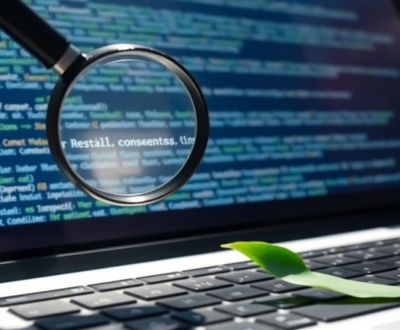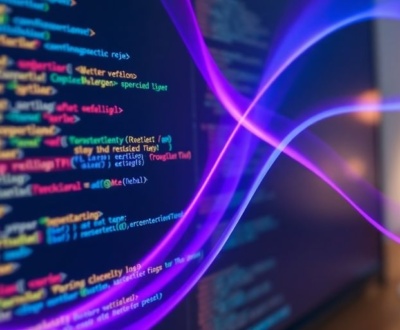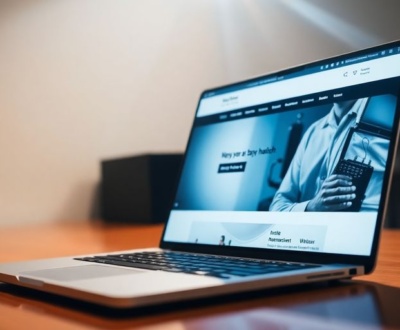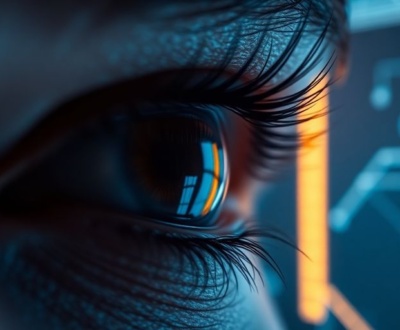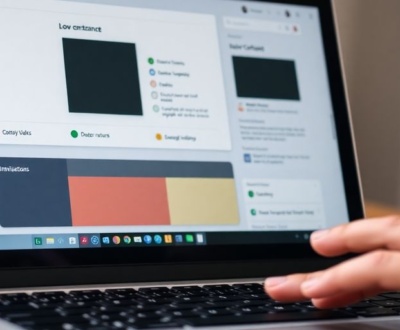Artificial Intelligence (AI) is changing the way we create websites. It helps designers work faster and more efficiently, allowing them to focus on more creative tasks. With AI, building websites is becoming easier and more personalized, making it a valuable tool for both professionals and beginners. As we look ahead, it’s clear that AI will play a big role in the future of web design.
Key Takeaways
- AI helps speed up the web design process, allowing designers to focus on creativity.
- Personalization is key; AI customizes website experiences based on user preferences.
- AI tools can analyze data to suggest innovative designs and improvements.
- Collaboration between AI and human designers leads to better results.
- AI is set to evolve, making web design smarter and more user-friendly.
The Role of AI in Automating Web Design
AI is changing the way we create websites by automating many tasks that used to take a lot of time. AI automates tasks, generates content, optimizes design, and bolsters user experience. This means designers can focus more on creativity instead of repetitive work.
Streamlining the Design Process
- AI tools can quickly create design elements that match current trends.
- They help in generating unique designs without much manual effort.
- Automation ensures that designs are consistent across the website.
AI-Based Website Builders
- Platforms like Wix ADI and Bookmark’s AIDA use AI to help users build websites easily.
- These tools can suggest layouts and even handle coding tasks.
- They make web design accessible to people without technical skills.
Automation and Efficiency
- AI can automate repetitive tasks, saving time for designers.
- It analyzes user data to recommend layouts and color schemes.
- This leads to designs that are more likely to engage visitors.
AI is not just a tool; it’s a partner in the design process, helping to create better websites faster.
AI-Generated Designs and Personalization
Tailoring User Experiences
AI has transformed how websites interact with users by enabling personalized experiences. Websites can now adapt to individual preferences, making each visit unique. For instance, an e-commerce site might change its layout or product suggestions based on a user’s previous interactions. This level of customization not only enhances user satisfaction but also increases engagement and conversion rates.
Dynamic Content Adaptation
With AI, websites can dynamically adjust their content. Here are some ways this is achieved:
- Behavior Analysis: AI analyzes user behavior to present relevant content.
- Location-Based Services: Content can change based on the user’s location.
- Real-Time Updates: Websites can update content instantly based on user actions.
Enhancing User Engagement
AI-generated designs significantly boost user engagement. By offering tailored experiences, websites can:
- Increase user retention through personalized content.
- Improve conversion rates with targeted product recommendations.
- Create a more enjoyable browsing experience, leading to longer visit durations.
AI has opened up new possibilities for personalization and user experience, allowing designers to tailor websites to individual preferences and behaviors.
In summary, AI-generated designs are not just about aesthetics; they are about creating a more engaging and personalized experience for every user.
Innovative Design Solutions Through AI

AI-Driven Creativity
AI is changing how we think about creativity in web design. With AI, designers can explore new ideas quickly. For example, AI can analyze trends and suggest fresh designs based on what users like. This helps designers make choices that are not only pretty but also effective.
Data-Backed Design Decisions
Using AI means making decisions based on real data. Here are some ways AI helps:
- Analyzes user behavior to find out what works best.
- Suggests A/B tests to compare different designs and see which one users prefer.
- Offers insights into what colors and layouts attract more visitors.
A/B Testing and Optimization
A/B testing is a smart way to improve websites. AI can help by:
- Creating different versions of a webpage.
- Tracking how users interact with each version.
- Choosing the best-performing design based on user feedback.
AI is not just a tool; it’s a partner in creating websites that are both beautiful and functional. By embracing AI, designers can focus on what they do best while letting technology handle the rest.
In summary, AI is reshaping web design by providing innovative solutions that enhance creativity, support data-driven decisions, and streamline testing processes. This means websites can be more engaging and effective for users, making the future of web design exciting and full of possibilities.
Balancing AI and Human Creativity in Web Design
Complementing Human Creativity
AI is not here to replace human designers; instead, it acts as a powerful tool that enhances their creative abilities. By automating repetitive tasks, AI allows designers to focus on more complex and innovative aspects of their work. This partnership can lead to unique designs that neither could achieve alone.
Overcoming AI Limitations
While AI can process vast amounts of data and generate designs, it still has limitations. For instance, AI often requires human input to refine its outputs. Designers can guide AI to create more tailored and relevant designs, ensuring that the final product resonates with users. Here are some key points to consider:
- AI lacks emotional understanding.
- Human intuition is essential for creativity.
- Collaboration can lead to better results.
Collaborative Design Approaches
The best outcomes in web design come from a blend of AI and human creativity. Designers can use AI to generate ideas and then apply their unique insights to refine those ideas. This collaborative approach can lead to:
- More innovative solutions.
- Enhanced user experiences.
- A deeper understanding of user needs.
The future of web design lies in the synergy between AI and human creativity, where both can thrive together, creating exceptional user experiences.
The Future of AI in Web Design

Predictive and Personalized Experiences
The future of web design is bright with AI technology leading the way. Designers will be able to create websites that adapt to individual users. This means that:
- Websites will learn from user behavior.
- Content will be tailored to fit personal preferences.
- User experiences will become more engaging and relevant.
Integration with Emerging Technologies
AI will not work alone; it will combine with other technologies to enhance web design. Some key integrations include:
- Virtual Reality (VR) for immersive experiences.
- Augmented Reality (AR) for interactive elements.
- Machine Learning to improve design choices over time.
Continuous Evolution and Improvement
As AI continues to grow, so will its role in web design. This evolution will bring:
- More efficient design processes.
- Enhanced creativity through AI-driven tools.
- Ongoing updates to keep up with user needs.
Embracing AI in web design is not just about keeping up; it’s about leading the way into a future where creativity and technology work hand in hand.
In summary, the future of web design is set to be transformed by AI, making it more personalized, integrated, and continuously evolving. AI-generated designs will shape how we interact with the web, making it a more user-friendly space for everyone.
Challenges and Considerations in AI-Generated Designs
Security Concerns
AI systems often require access to sensitive data, which raises serious security issues. Organizations must implement strong cybersecurity measures to protect this data from theft and misuse. This includes:
- Regular security audits
- Data encryption
- Access controls to limit who can view sensitive information
Maintenance and Updates
AI tools need regular maintenance to function effectively. This includes:
- Updating software to fix bugs and improve performance.
- Regularly reviewing data inputs to ensure quality.
- Training staff to use AI tools effectively.
Ethical Implications
The use of AI in design raises important ethical questions. Designers must consider:
- The potential for bias in AI-generated content.
- The impact of automation on jobs in the design industry.
- How to ensure that AI tools are used responsibly and transparently.
AI can be a powerful tool, but it also comes with responsibilities. Designers must navigate these challenges to harness its full potential while ensuring ethical practices.
In summary, while AI offers exciting possibilities for web design, it also presents challenges that must be addressed to ensure successful and responsible implementation. Understanding these challenges is crucial for designers as they integrate AI into their workflows.
Final Thoughts on AI in Web Design
In summary, AI is changing how we create websites, making the process easier and more fun. It helps designers focus on creative tasks while handling boring ones. With AI, websites can be tailored to fit what users want, which improves their experience. Instead of fearing what AI might do in the future, we should welcome it as a helpful tool. As we move forward, AI will likely become a standard part of web design, helping everyone from beginners to experts build better sites.
Frequently Asked Questions
What is the role of AI in web design?
AI helps make web design faster and easier. It can automate boring tasks, allowing designers to focus on more creative work.
How does AI personalize user experiences?
AI looks at user behavior and preferences to tailor website content. This means users see what they like, making their experience better.
Can AI really improve design creativity?
Yes! AI can suggest new ideas and designs based on data. This helps designers create fresh and appealing visuals.
What challenges does AI face in web design?
AI can have security issues and needs regular updates to work well. Designers must also be careful about ethical concerns.
How will AI change the future of web design?
In the future, AI will help create smarter websites that are more personalized and user-friendly, making browsing easier for everyone.
Is AI a replacement for human designers?
Not really! AI is a tool that helps designers. It can handle routine tasks, but human creativity is still very important.
About this blog
We are a digital marketing company with a focus on helping our customers achieve great results across several key areas.
Request a free quote
We offer professional SEO services that help websites increase their organic search score drastically in order to compete for the highest rankings even when it comes to highly competitive keywords.




